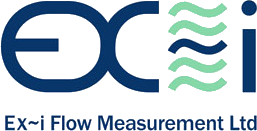Turbine flow meters are used to measure the velocity of liquids, gases and vapours in pipes, eg. hydrocarbons, water, chemicals, cryogenic liquids, air and industrial gases. In order to achieve a higher accuracy in measuring temperature, pressure, and fluid properties, turbine flow meters incorporate flow computer functionality.
How does it work?
As the fluid or steam passes through the turbine flow meter the rotor spins as a result of the mechanical energy of the flow stream. The angle of the rotor blades enables them to transform the energy from the flow stream into rotational energy. Therefore the speed of the fluid stream’s movement corresponds to the speed at which the rotor spins.
As the shaft rotates and the blades move they generate a pulse, so the faster the fluid moves the more pulses are generated. These pulses are detected magnetically by the transmitter, which determines the flow rate of the stream in both forward and reverse flow directions and, when the rotation speed of the shaft is steady, it corresponds to the steam velocity.
Who uses turbine flow meters?
Turbine flow meters have been found to work for the food and beverage and chemical industries but commonly they are operated by large commercial users and:
• Fire protection systems – specifically requiring high flow rates e.g. fire meters which are a type of turbine meter.
• Petroleum industry – to transfer hydrocarbons
• Water Industry – to measure the water used in construction, pool filling, or in distribution systems between water districts.
What are the advantages of turbine flow meters?
• Wide flow range ability
• Less pressure loss when measuring high flow rates than other flow meters
• Highly accurate thanks to flow computer functionality
• Simple operation and installation
• Durable and easy to maintain
• Measure a wide range of temperatures and pressures
• Signal output is straightforward to read
What else do you need to know about turbine flow meters?
• Operate turbine flow meters above 5% of maximum flow because the rotor drag slows the rotor land low flow rates are less accurate. Otherwise use a displacement or jet meter at low flow rates.
• Be careful when operating at high velocities and using non-lubricating liquids, as these can prematurely wear the flow meter, causing inaccurate measurement and failure to function. For this reason you should avoid measuring dirty fluids.
